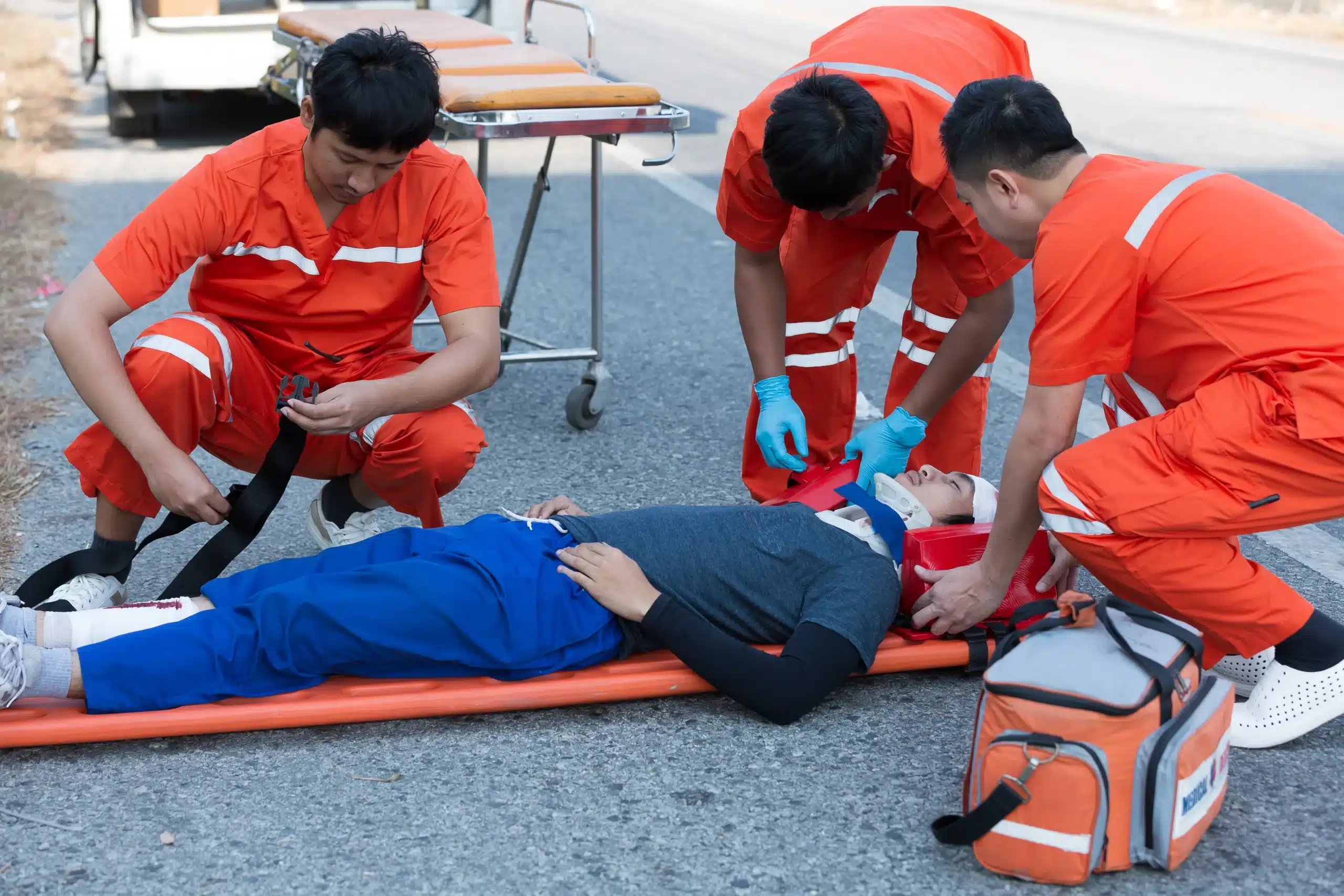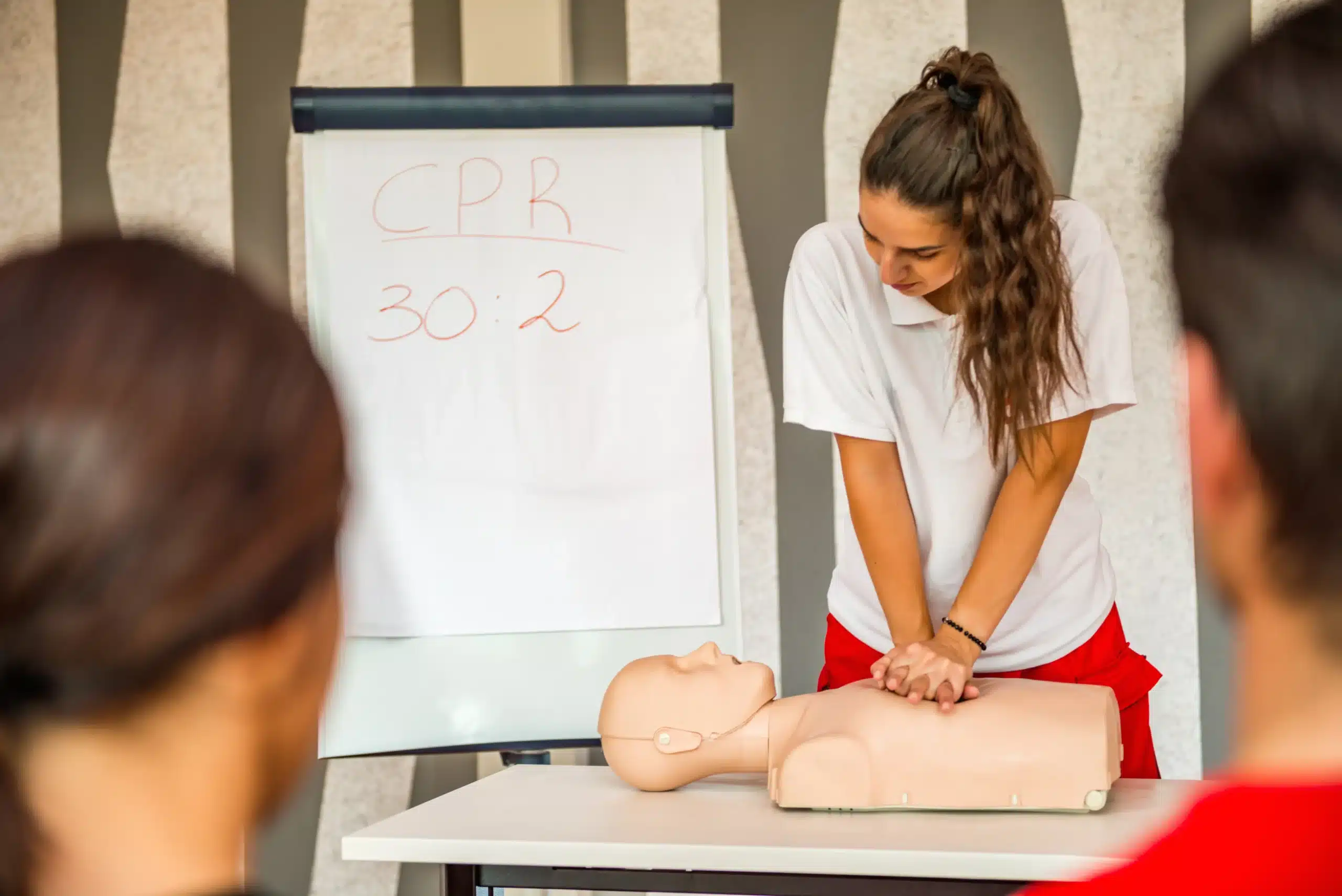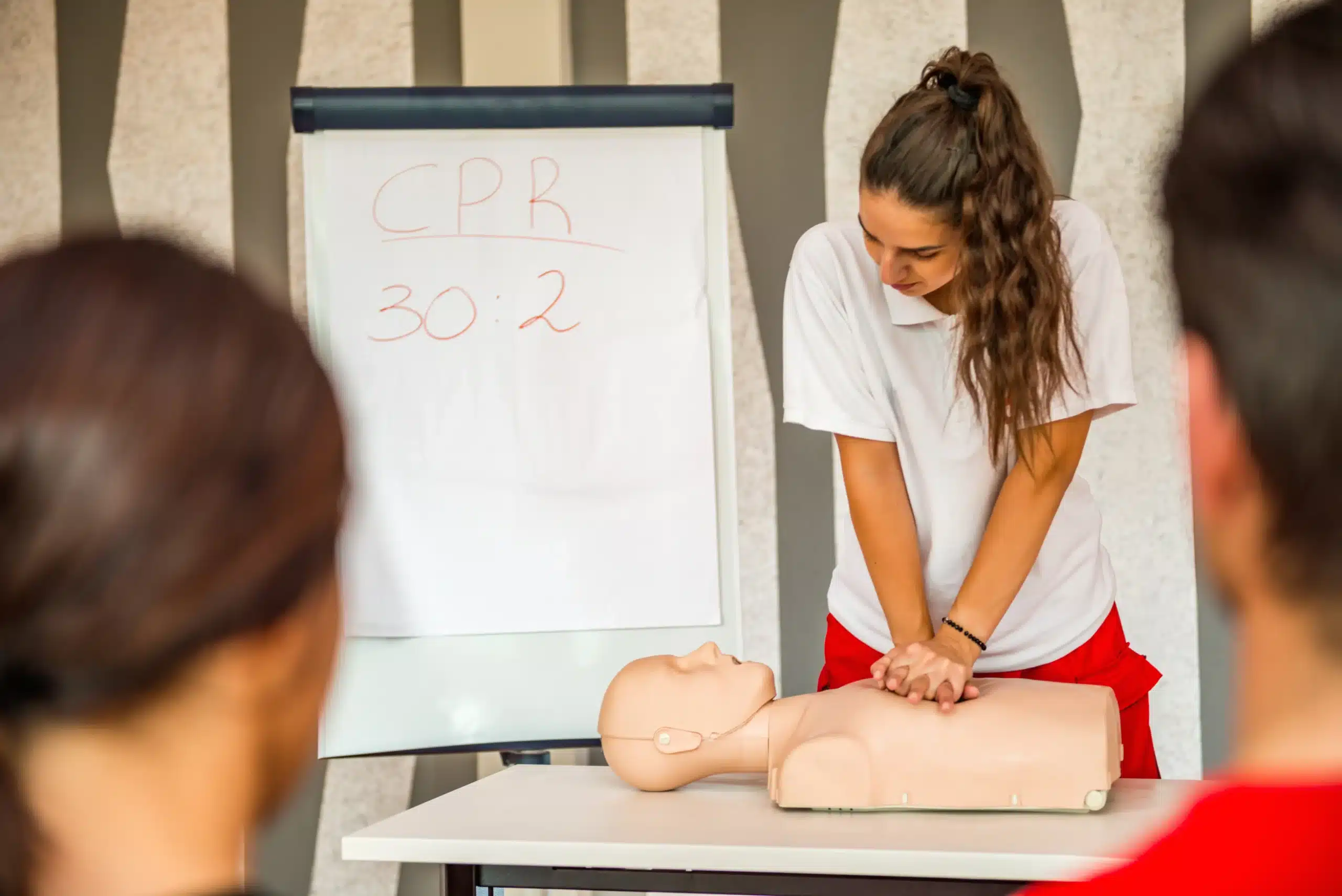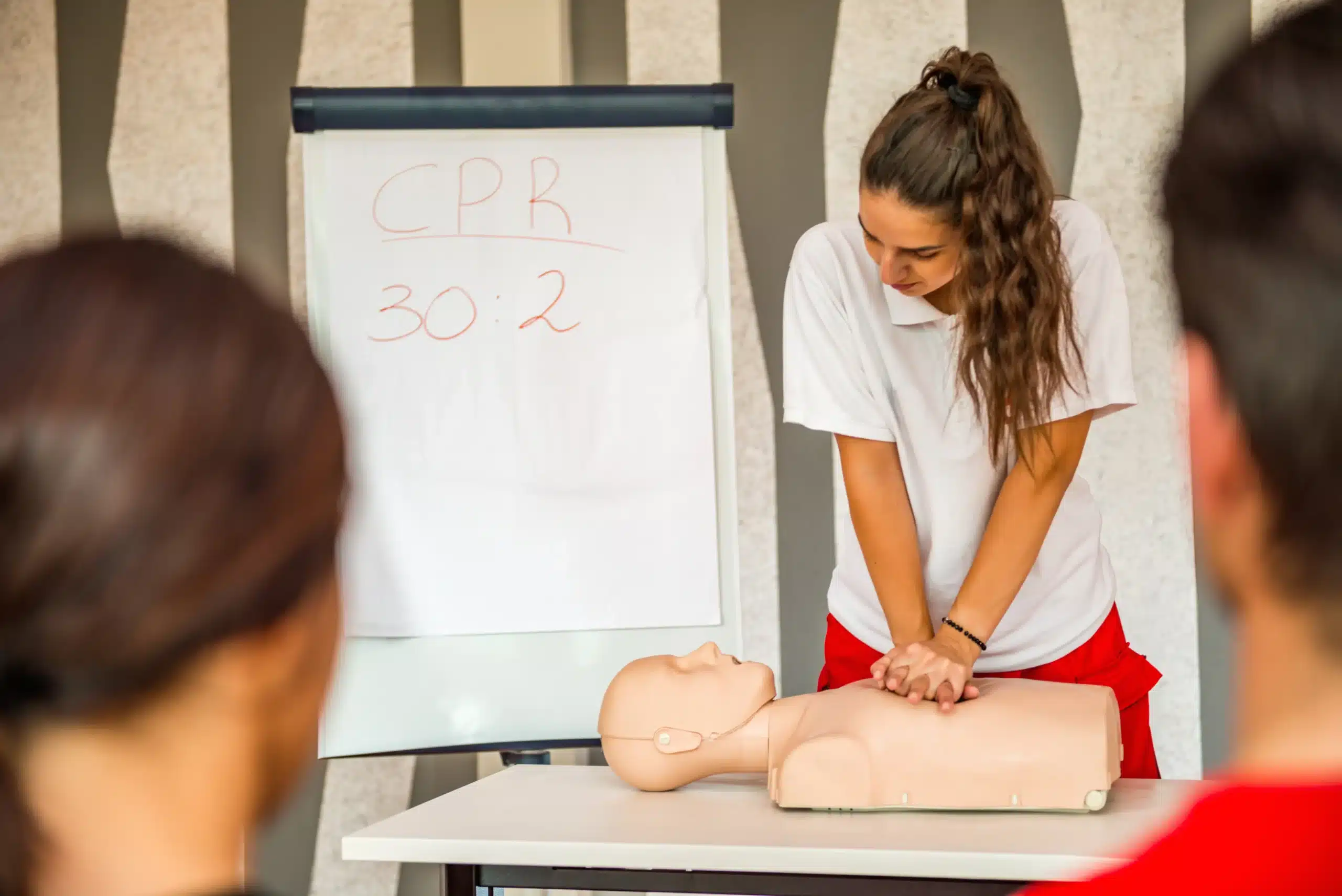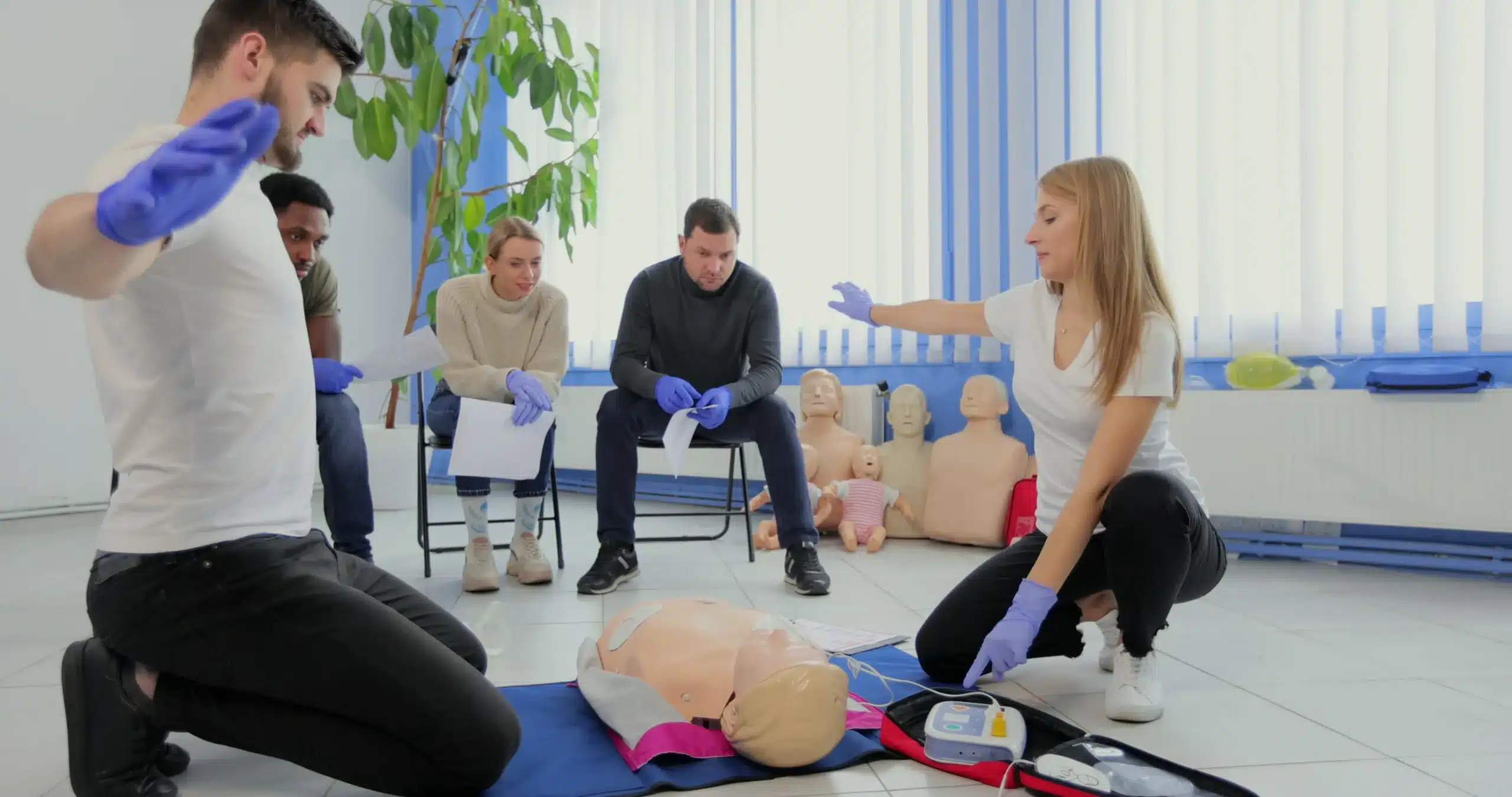Emergencies can happen anytime, anywhere. Being equipped with life-saving skills like CPR can make all the difference. But where do you begin your training journey? This guide serves as your roadmap to finding the perfect cpr center and becoming CPR certified. We’ll explore the various types of CPR courses, discuss the importance of certification and accreditation, and provide practical tips for choosing a training center that fits your learning style and budget. Whether you’re a healthcare worker seeking recertification or a concerned citizen wanting to learn CPR for the first time, this guide will empower you to take action and become a vital link in the chain of survival.
Key Takeaways
- CPR Training Empowers You to Act: Equipping yourself with CPR skills, whether for professional or personal reasons, allows you to confidently respond to medical emergencies and potentially save lives. Explore various course options to find the best fit.
- Select a CPR Center Wisely: A reputable center with qualified instructors, accredited certifications, and convenient learning formats is key to receiving high-quality training. Prioritize hands-on practice and consider factors like class size and location.
- Maintain Your Skills Through Recertification: Regularly refreshing your CPR knowledge and skills ensures you stay up-to-date with the latest guidelines and can provide effective assistance when it matters most.
What is a CPR Center?
A CPR center is a specialized training facility offering courses in cardiopulmonary resuscitation (CPR) and first aid. These centers provide a range of training options—from the basics of CPR to more advanced life support—often following guidelines from recognized organizations like the American Heart Association (AHA). They’re hubs for essential life-saving skills, empowering everyday people to respond effectively in medical emergencies.
CPR centers offer flexible learning formats, including in-person classes, online modules, and blended learning that combines both. This allows you to find a course that fits your schedule and how you learn best. Whether you’re a busy professional, a student, or a stay-at-home parent, there are options to make CPR training accessible. The curriculum typically covers Basic Life Support (BLS), Advanced Cardiovascular Life Support (ACLS), Pediatric Advanced Life Support (PALS), and standard first aid training, ensuring participants receive high-quality, nationally recognized instruction. CPR centers equip people with the skills and confidence to act quickly and potentially save lives before professional medical help arrives.
CPR Center Course Types
CPR centers offer various courses to equip people with life-saving skills. Whether you’re a healthcare professional or want to be prepared for emergencies, understanding the different course types is essential. Here’s a breakdown of common CPR and first aid certifications:
Basic Life Support (BLS)
The BLS course provides foundational training in recognizing and responding to life-threatening emergencies, especially cardiac arrest. It covers core skills like CPR, using an AED, and relieving choking. This course is vital for healthcare providers and anyone who might need to perform CPR. It emphasizes early intervention and high-quality CPR to improve survival rates.
CPR/AED for Adults, Children, and Infants
This comprehensive course teaches CPR techniques and how to use an automated external defibrillator (AED) on adults, children, and infants. It prepares you for various emergency scenarios, ensuring you can confidently assist individuals of any age. CPR and AED training empowers you to respond effectively during critical moments.
First Aid Training
First aid training equips you with practical skills to handle medical emergencies. You’ll learn wound care, how to help someone who’s choking, and how to manage common medical situations. This training is valuable for anyone who wants to be prepared for everyday mishaps and more serious incidents.
Advanced Cardiovascular Life Support (ACLS)
ACLS is an advanced course designed for healthcare professionals. It focuses on recognizing and treating cardiac arrest and other cardiovascular emergencies. The training emphasizes teamwork, effective communication, and advanced life support techniques. These skills are essential for medical teams responding to critical situations.
Pediatric Advanced Life Support (PALS)
PALS is a specialized course for healthcare providers who work with infants and children. It teaches how to respond to pediatric emergencies, covering life-saving interventions and specialized care for young patients. This training is crucial for anyone working in pediatrics or regularly caring for children. It provides the specific knowledge and skills needed to handle emergencies involving young children.
Choose the Right CPR Center
Finding the right CPR center is crucial for receiving quality training that prepares you for real-life emergencies. Here’s what to consider:
Course Offerings and Specializations
Not all CPR centers offer the same courses. Think about your specific needs. Are you a healthcare provider requiring Advanced Cardiovascular Life Support (ACLS) or Pediatric Advanced Life Support (PALS)? Or are you a parent or teacher looking for basic CPR and first-aid training? Concord CPR Classes, for example, offers a range of AHA-certified courses covering these needs and more. Make sure the center you choose provides the specific training you’re looking for.
Certification and Accreditation
Accreditation matters. Choose a center offering certification from a reputable organization like the American Heart Association (AHA). This ensures your training meets nationally recognized standards and is widely accepted.
Instructor Qualifications and Experience
Instructors should be experienced and certified by a recognized organization. Look for instructors with a strong background in healthcare or emergency services. Their expertise will significantly impact the quality of your training. A good instructor can answer your questions thoroughly and provide valuable insights beyond the basic curriculum. You can often find information about instructor qualifications on a CPR center’s website, like this page which outlines the process of becoming a certified CPR instructor.
Location and Accessibility
Convenience is key. Choose a center that’s easy to get to and offers flexible course times that fit your schedule. Daily courses, evening classes, or weekend options can make training more manageable.
Class Sizes and Hands-On Practice
Smaller class sizes allow for more personalized attention from the instructor and more opportunities for hands-on practice. Adequate practice time with mannequins and AEDs is essential for developing the muscle memory and confidence you’ll need in a real emergency. Many CPR courses combine CPR and AED training with basic life-saving and first-aid training, creating a comprehensive learning experience.
Learning Formats: In-Person, Online, or Blended
CPR centers often offer different learning formats. In-person classes provide hands-on training and direct interaction with instructors. Online courses offer flexibility, while blended learning combines online modules with in-person skills sessions. Consider your learning style and schedule when selecting a format.
CPR Training Costs
CPR training is an investment in life-saving skills, and understanding the associated costs can help you budget effectively. Several factors influence the overall expense, including the course type, location, and training provider. Let’s break down the typical costs involved.
Average Course Prices
CPR course costs depend on the level of certification you’re pursuing. Basic CPR and AED training for adults, children, and infants usually ranges from $70 to $90 for in-person classes in Concord. Online renewal courses tend to be more budget-friendly, typically between $50 and $70. More specialized training, such as BLS for healthcare providers, ACLS, or PALS, typically comes at a higher price point due to the advanced content. For the most accurate pricing, check directly with the training center. You can find more information on CPR and First-Aid certification costs in our detailed guide.
Additional Fees
While the advertised course fee often covers the core instruction, inquire about any potential extra costs. Some training centers may charge additional fees for items like certification cards, course materials, or online access codes. For example, some providers might have a separate fee for registering your certification, as highlighted by CPR Test Center. Understanding the full cost upfront helps avoid surprises.
Group Discounts and Package Deals
If you’re training with a group, explore potential discounts. Many CPR training centers, including Concord CPR Classes, offer reduced rates for group bookings. This can be a cost-effective way to train your team. Additionally, some providers offer package deals that combine multiple courses, such as CPR and First Aid, at a discounted price. Ask about these options to maximize your training budget. For convenient recertification options, Concord CPR Classes offers daily certification courses.
Online vs. In-Person CPR Training
Deciding between online and in-person CPR training often comes down to your learning style, schedule, and budget. Both formats have their own advantages, and understanding these differences can help you make the right choice. We’ll also cover hybrid learning, which combines the best of both worlds.
Advantages of Online Courses
Online CPR courses offer a convenient way to learn these essential skills. The flexibility to learn at your own pace makes online learning perfect for busy professionals, parents, or anyone with a full schedule. You can study the material whenever and wherever it works for you, revisiting sections as needed. Plus, online renewal courses are often easier on the wallet. Our CPR renewal guide offers more information on affordable recertification.
Benefits of In-Person Training
While online courses offer flexibility, in-person training provides a crucial element: hands-on practice. Working directly with instructors and receiving immediate feedback helps you build confidence in performing chest compressions and rescue breaths. This tactile experience is invaluable for mastering the physical techniques. Many in-person classes also integrate AED training and basic first aid, providing a comprehensive approach to emergency preparedness, as explained in this article on the benefits of CPR training. Concord CPR Classes offers comprehensive in-person training in our Concord location, conveniently serving residents of Walnut Creek, Concord, and Pleasant Hill. You can find more information on our CPR classes in Walnut Creek on our website.
Hybrid Learning Options
For those seeking a balance between flexibility and hands-on learning, hybrid courses offer an ideal solution. These programs combine online coursework with in-person skills sessions. You can study the theoretical material online at your own pace and then attend a practical session to practice your skills with certified instructors. Concord CPR Classes offers various learning formats, including hybrid learning, to accommodate different learning styles. This blended approach ensures you receive both a solid theoretical understanding and the practical experience necessary to perform CPR effectively.
What to Expect During CPR Training
Knowing what to expect can help you feel prepared and confident going into your CPR training. From course structure to hands-on practice and the certification process, here’s a glimpse into a typical CPR class.
Course Duration and Structure
CPR courses are designed to be efficient and comprehensive, covering essential life-saving techniques in a relatively short time. Concord CPR Classes offers a range of AHA-certified courses, including Basic Life Support (BLS), Advanced Cardiovascular Life Support (ACLS), Pediatric Advanced Life Support (PALS), and comprehensive first-aid training. These courses typically range from a few hours to a full day, depending on the specific certification level and any combined training, such as CPR/AED/First Aid. Expect a blend of interactive lectures, demonstrations, and hands-on practice. You’ll find information on CPR and First Aid training in our complete guide.
Hands-On Practice with Mannequins and AEDs
While online courses offer a convenient way to learn CPR basics, hands-on training provides the crucial experience needed to develop true confidence and proficiency. You’ll work with realistic mannequins designed to simulate the human body’s response to chest compressions and rescue breaths. This tactile experience is invaluable for mastering the correct depth and rate of compressions, proper hand placement, and body positioning. Many CPR classes combine CPR and AED training with basic life-saving and first-aid training. You’ll also learn how to use an automated external defibrillator (AED), a portable device that can help restore a normal heart rhythm during sudden cardiac arrest. Practicing with AED trainers in a safe environment ensures you’re prepared to use one in a real emergency. For more information on available courses, check out our guide to CPR and First Aid in Concord.
Assessment and Certification
To receive your CPR certification, you’ll need to demonstrate your skills and knowledge through a practical assessment. This typically involves performing CPR on a mannequin in front of your instructor, showcasing your ability to apply the techniques you’ve learned. Once you successfully complete the assessment, you’ll receive your official CPR certification card. Concord CPR Classes offers convenient daily certification courses to fit your schedule. Remember that CPR certification is typically valid for two years, after which you’ll need to take a recertification course to stay up-to-date and maintain your credentials. Staying current with the latest CPR guidelines and techniques is crucial for providing effective assistance in emergencies. The chances of survival for cardiac arrest victims depend significantly on the availability of someone who can perform CPR and the speed of emergency medical response.
CPR Recertification: Why It Matters
CPR skills are like any other skill—they can fade if you don’t use them regularly. Regular practice and recertification are essential to maintain your confidence and proficiency in these life-saving techniques. Recertification not only validates your skills but also demonstrates your commitment to providing high-quality care in emergencies. It’s an investment in yourself and the well-being of your community.
Recommended Recertification Intervals
CPR certifications are typically valid for two years. After this period, it’s crucial to refresh your knowledge and skills. This ensures you’re up-to-date with the latest guidelines from organizations like the American Heart Association. Check with your certifying organization or employer for specific recertification requirements, as they can sometimes vary. In-person CPR renewal classes in Concord typically range from $70 to $90, while online renewal courses are often a more budget-friendly option.
Staying Updated on Latest Techniques
Medical guidelines and best practices are constantly evolving. Recertification courses cover these updates, ensuring you’re equipped with the most current and effective techniques. This ongoing learning can significantly impact the outcome of a real-life emergency. While online CPR courses offer a convenient way to learn the basics, combining online learning with hands-on training provides a well-rounded learning experience. This blended approach builds confidence and allows you to refine your skills with experienced instructors. Hands-on practice is essential for mastering skills like chest compressions and rescue breaths, giving you the confidence to act quickly when it matters most. For healthcare professionals, staying current with certifications like Basic Life Support (BLS) is often a job requirement and demonstrates a commitment to patient care.
How CPR Centers Improve Community Safety
CPR centers are key to building safer communities. They do this by training people to respond to emergencies and promoting a culture of preparedness. Their impact is twofold: increasing public health awareness and improving workplace safety.
Increasing Public Health Awareness
CPR training gives individuals the skills to act quickly during medical emergencies. When you learn CPR, you can provide immediate assistance, which can be crucial before professional responders arrive. This is especially important in cases of cardiac arrest, where the ability to perform CPR significantly increases the chances of survival. The more people trained in CPR, the better the chances of quick action during emergencies, creating a safer community. Beyond the technical skills, CPR training builds confidence in handling challenging situations, making people feel more empowered and responsible. This increased awareness creates a more resilient public health landscape. Knowing how to respond in a crisis builds a sense of accomplishment and can inspire others to pursue training.
Improving Workplace Safety
CPR centers also make workplaces safer. In many work settings, having trained CPR responders on hand can be the difference between life and death for a cardiac arrest victim. The faster CPR is performed, the better the outcome. CPR certification often includes training on automated external defibrillators (AEDs) and basic first aid, making employees even better prepared for emergencies. This comprehensive training not only equips individuals with essential skills but also builds a safety-conscious culture at work. Many companies now understand the importance of having trained CPR responders and encourage or require employees to get certified. This proactive approach reduces risks, makes employees feel safer, and contributes to a more productive work environment. Combined CPR and first-aid training creates a well-rounded approach to workplace safety.
Find and Evaluate CPR Centers Near You
Finding the right CPR training center involves a bit of research, but it’s well worth the effort. Knowing where to look, what to consider, and which questions to ask can help you find a program that meets your needs and prepares you to confidently handle emergencies.
Local Search Strategies
Start your search by looking for CPR classes near you. A simple online search for “CPR training” plus your city or region (e.g., “CPR training Concord”) will generate a list of local providers. You can also check community centers, hospitals, and fire departments, as they often offer CPR courses. Don’t forget to explore options like Concord CPR Classes, which provides a range of courses from basic first aid to advanced certifications like ACLS and PALS. Looking at a variety of providers ensures you find a course that aligns with your specific needs and skill level.
Reading Reviews and Testimonials
Once you’ve identified a few potential training centers, take the time to read reviews and testimonials. Past participants often share their experiences, offering valuable insights into the quality of instruction, the course structure, and the overall learning environment. Positive feedback can give you confidence in a program’s effectiveness. A good CPR class often combines CPR and AED training with basic life-saving and first-aid skills, creating a more comprehensive learning experience.
Questions to Ask Before Enrolling
Before you commit to a CPR course, asking the right questions can save you time and ensure you’re making an informed decision. Inquire about course content, duration, and certification validity. Understanding the costs involved is also essential. Ask about course fees, additional expenses (like study materials), and whether the center offers group discounts or special promotions. For example, find out about pricing and discounts at facilities like Concord CPR Classes. Knowing the typical cost of CPR renewal classes—between $70 and $90 for in-person training in Concord, and $50 to $70 for online renewal—helps you budget accordingly. By being proactive and asking these key questions, you can choose a CPR center that fits both your learning style and your budget.
Popular CPR Training Providers
Finding the right CPR training provider is crucial for receiving high-quality instruction and a recognized certification. Several reputable organizations offer comprehensive CPR courses designed for various skill levels and needs. Let’s explore some of the leading CPR training providers:
American Heart Association (AHA)
The American Heart Association sets the standard for CPR training. They offer a range of courses, including Basic Life Support (BLS), Advanced Cardiovascular Life Support (ACLS), and Pediatric Advanced Life Support (PALS). These courses cover essential life-saving techniques for healthcare professionals and the general public. AHA certifications are widely accepted and respected.
American Red Cross
The American Red Cross is another well-known CPR training provider. They offer various learning formats, including online, in-person, and blended learning, making their courses accessible to diverse learners. The Red Cross provides CPR training for adults, children, and infants, equipping participants with the skills to handle various emergencies.
National Safety Council (NSC)
The National Safety Council focuses on workplace safety. They offer CPR training that emphasizes immediate assistance in emergencies. Their courses empower individuals to respond effectively to cardiac arrest and provide aid until professional help arrives.
American Safety & Health Institute (ASHI)
The American Safety & Health Institute provides CPR and first aid training that meets OSHA regulations. Their courses cater to both healthcare professionals and the general public. ASHI certification is recognized in many industries.
ProTrainings
ProTrainings offers a variety of CPR courses, including online options, allowing for flexible learning at your own pace. Their programs cater to individuals and organizations. ProTrainings also provides continuing education opportunities for healthcare professionals.
Concord CPR Classes
Concord CPR Classes offers a comprehensive selection of American Heart Association-certified courses, including BLS, ACLS, PALS, CPR, and First Aid. Serving Concord, Walnut Creek, and Pleasant Hill, they provide various learning formats, including in-person, online, and blended learning, to accommodate busy schedules. Concord CPR Classes emphasizes affordability and high-quality instruction, ensuring participants receive essential life-saving skills. They also offer discounted group classes and the American Heart Association’s RQI program for quick certification.
Related Articles
- CPR Classes in Concord: Find Training Near You – Concord CPR Classes
- BLS Training Near Me: A Practical Guide – Concord CPR Classes
- ACLS Certification in Concord: Your Complete Guide – Concord CPR Classes
- Pediatric Advanced Life Support (PALS) in Concord, CA – Concord CPR Classes
- Pediatric CPR & First Aid Training in Concord – Concord CPR Classes
Frequently Asked Questions
How much does CPR training typically cost? CPR training costs vary depending on the type of course and where you take it. Basic CPR/AED training usually falls between $70 and $90 for in-person classes, while online renewals are often cheaper, around $50-$70. More advanced courses like BLS, ACLS, and PALS are generally more expensive. Check with your chosen training center for their specific pricing. Many centers offer group discounts, so if you’re training with friends, family, or colleagues, be sure to ask about those options.
What’s the difference between online and in-person CPR training? Online CPR training offers flexibility, allowing you to learn at your own pace and on your own schedule. It’s often a more affordable option, especially for renewals. However, in-person training provides the crucial benefit of hands-on practice with mannequins and AEDs, along with direct feedback from instructors. This can significantly boost your confidence in performing CPR in a real-life emergency. Some centers offer hybrid courses that combine online learning with in-person skills sessions, offering a balance of flexibility and practical experience.
How often do I need to renew my CPR certification? CPR certifications are typically valid for two years. It’s important to renew your certification before it expires to stay up-to-date on the latest guidelines and techniques. This ensures you can provide the most effective assistance in an emergency.
What should I look for when choosing a CPR training center? Look for a center that offers the specific type of training you need (e.g., BLS, ACLS, PALS, First Aid) and is accredited by a reputable organization like the American Heart Association. Check instructor qualifications, class sizes (smaller is often better for more personalized attention), and whether they offer convenient locations and schedules. Reading reviews and testimonials from previous students can also give you valuable insights.
Why is CPR training important for everyone, not just healthcare professionals? CPR is a life-saving skill that anyone can learn and use. While it’s essential for healthcare providers, knowing CPR can empower anyone to respond effectively in a medical emergency, potentially saving a life before professional help arrives. Cardiac arrest can happen anywhere, and having trained bystanders can significantly increase the chances of survival.



